Motorized Hurricane Screen
Why Maxforce

MAXFORCE PROVEN PROTECT
Engineered For Excellence
For nearly two decades, MaxForce has manufactured hurricane screens to meet the most demanding building code, the High Velocity Hurricane Zone of Miami-Dade. The MaxForce track is our newest version of the fixed track we have used with great success for high wind applications all over the globe.
The benefits of a fixed track are unmatched strength - this is important when designing a screen system for hurricanes. When you want the strongest system available, and a proven veteran of many hurricanes, the MaxForce Hurricane Track is your best choice.
MAXFORCE THE #1 MOTORIZED HURRICANE SCREEN
Contact A+ Certified MaxForce Screen Dealer Today...
MAXFORCE HURRICANE SCREENS
Engineering Features

No blowouts. No rewraps. No frustration.
MaxForce is the only retractable screen system on the market designed to stay locked in the track—even in high winds. Smart motor senses resistance and adjusts seamlessly, allowing self-correction when the screen encounters an obstacle: Fewer snags, fewer jams, and fewer costly service calls.
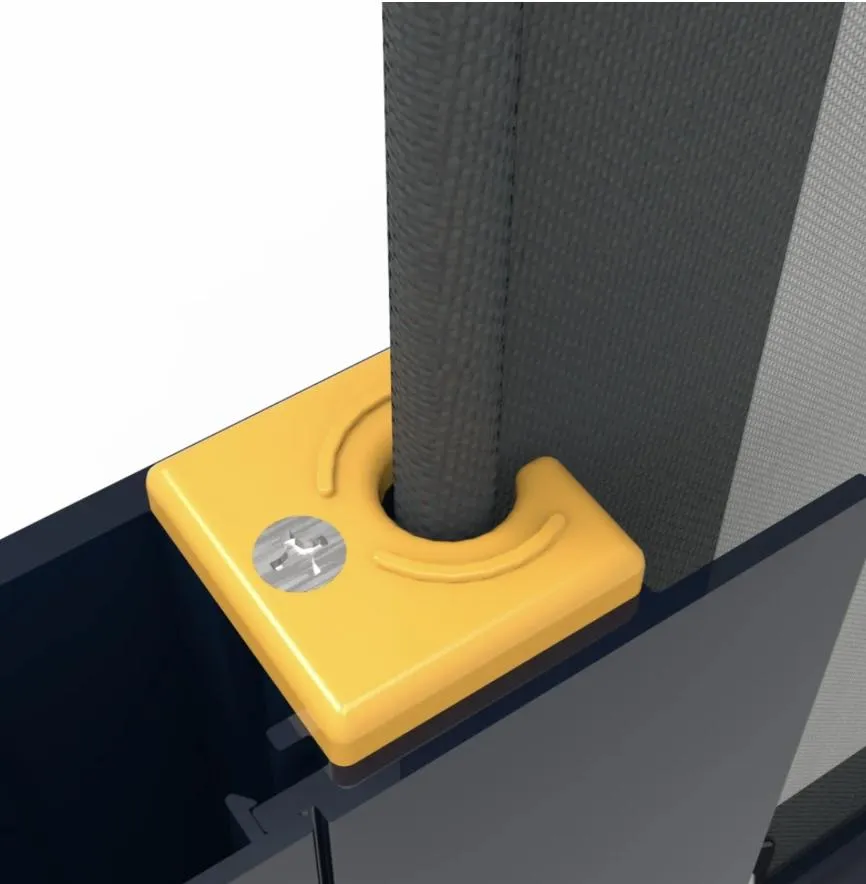
No Zipper. No Cable. Just Simple Deployment
MaxForce pioneered Keder-edge technology in motorized screens, delivering unmatched durability and simplicity. Borrowed from sailboat rigging, this system eliminates zippers, cables, and exposed hardware—ensuring smooth, reliable operation every time.
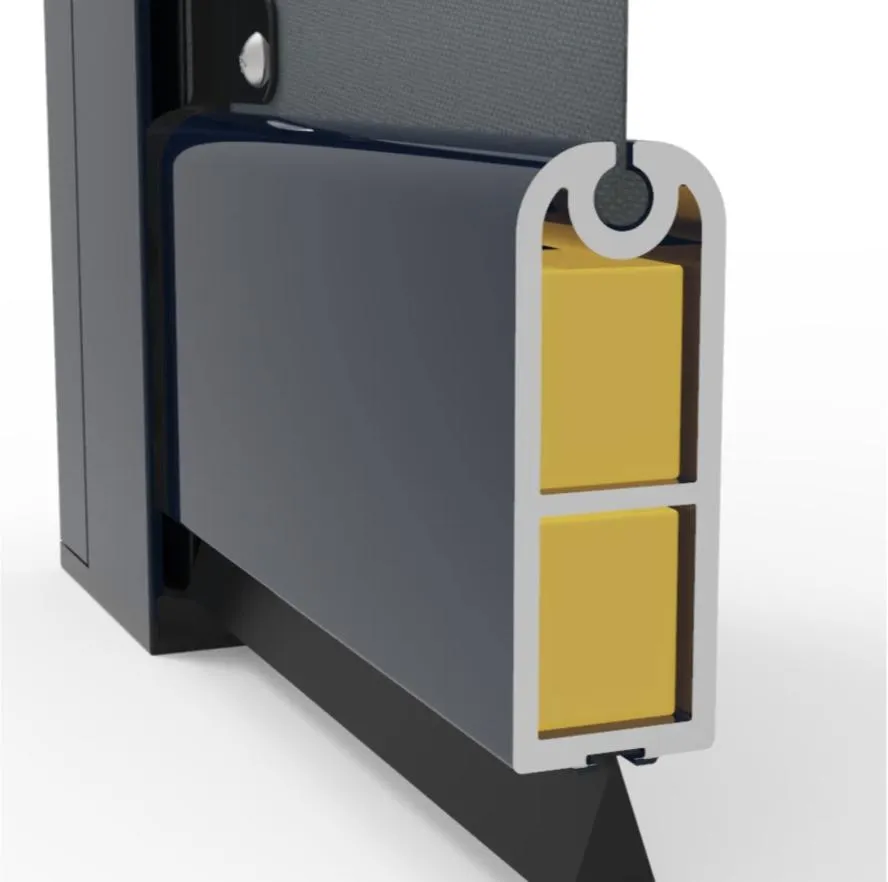
Heavy Duty
The MaxForce weight bar is engineered for strength—and built to hold its ground. Pound for pound, it’s the heaviest and most robust weight bar in the industry. This ensures proper screen tension, flawless deployment, and maximum stability in high wind zones. —limited flex, no failure.
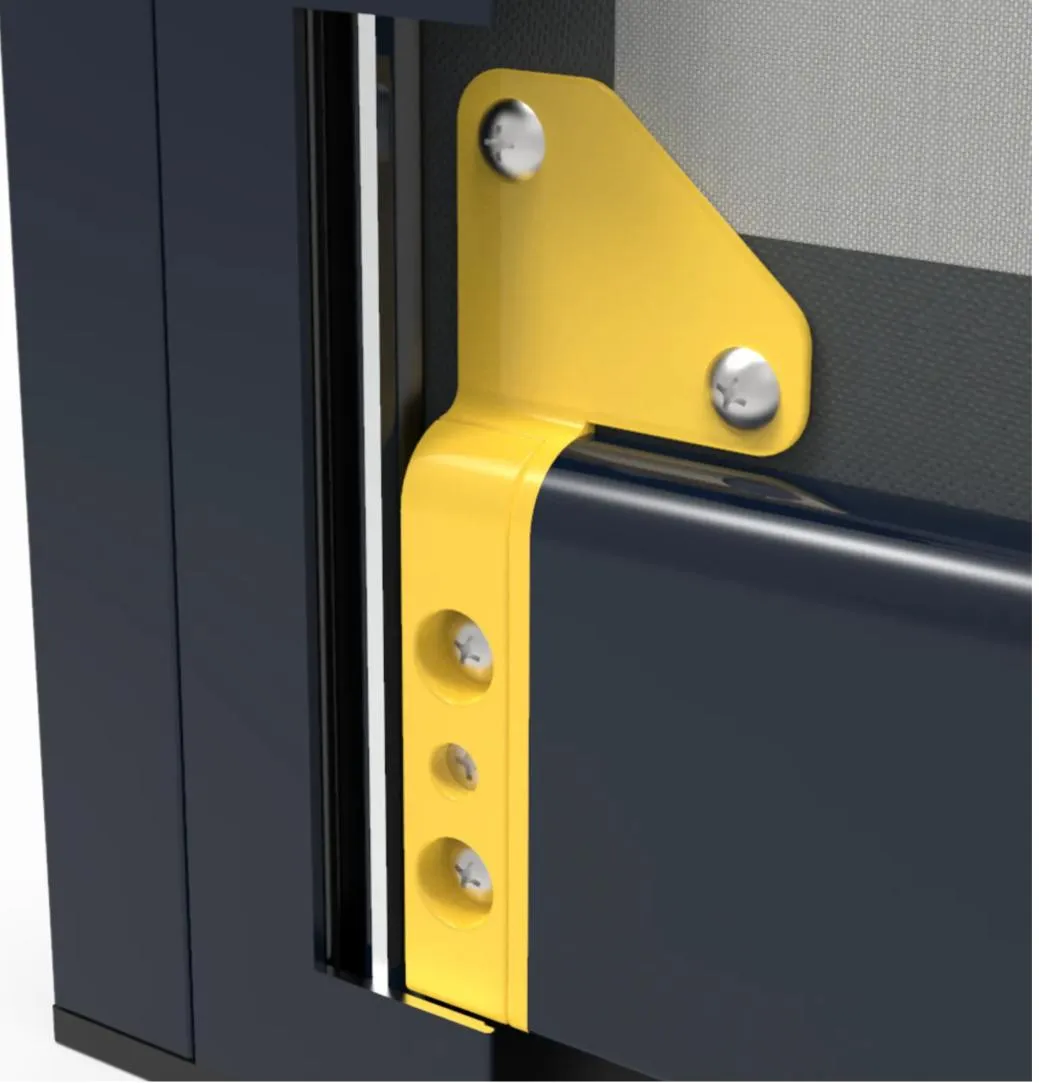
Reinforced Corners
MaxForce’s heavy-duty weight bar isn’t just strong. It’s smart. Reinforced corners and integrated tie-ins create a unified structure that acts like a solid wall of protection when deployed. Made from high-strength nylon, this bar absorbs impacts while maintaining structural integrity.
Motorized Hurricane Screen
Why Maxforce

MAXFORCE PROVEN PROTECT
Engineered For Excellence

For nearly two decades, MaxForce has manufactured hurricane screens to meet the most demanding building code, the High Velocity Hurricane Zone of Miami-Dade. The MaxForce track is our newest version of the fixed track we have used with great success for high wind applications all over the globe.
The benefits of a fixed track are unmatched strength - this is important when designing a screen system for hurricanes. When you want the strongest system available, and a proven veteran of many hurricanes, the MaxForce Hurricane Track is your best choice.
MAXFORCE THE #1 MOTORIZED
HURRICANE SCREEN
Contact A+ Certified MaxForce Screen
Dealer Today...
MAXFORCE HURRICANE SCREENS
Engineering Features

No blowouts. No rewraps.
No frustration.
MaxForce is the only retractable screen system on the market designed to stay locked in the track—even in high winds. Smart motor senses resistance and adjusts seamlessly, allowing self-correction when the screen encounters an obstacle: Fewer snags, fewer jams, and fewer costly service calls.

No Zipper. No Cable.
Just Simple Deployment
MaxForce pioneered Keder-edge technology in motorized screens, delivering unmatched durability and simplicity. Borrowed from sailboat rigging, this system eliminates zippers, cables, and exposed hardware—ensuring smooth, reliable operation every time.

Heavy Duty
The MaxForce weight bar is engineered for strength—and built to hold its ground. Pound for pound, it’s the heaviest and most robust weight bar in the industry. This ensures proper screen tension, flawless deployment, and maximum stability in high wind zones. —limited flex, no failure.

Reinforced Corners
MaxForce’s heavy-duty weight bar isn’t just strong. It’s smart. Reinforced corners and integrated tie-ins create a unified structure that acts like a solid wall of protection when deployed. Made from high-strength nylon, this bar absorbs impacts while maintaining structural integrity.

HEADACHE-FREE
Exclusive self-tensioning system eliminates 99.9% of screen issues. No track adjustments, broken zippers, or dislodged screens.

LIFETIME WARRANTY
Exterior shade screens reduce cooling bills and MaxForce hurricane screens reduce insurance premiums in hurricane zones.

HURRICANE STRONG
Our MaxForce tracks and advanced hybrid ballistic fabrics withstand 150+ mph winds. Approved by Florida Building Commission for hurricane zones. Lab and real-world tested.
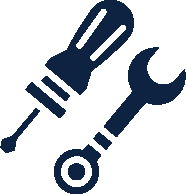
BUILT TO LAST
We use marine-grade materials such as powder-coated aluminum, UV-protected nylons, stainless steel fasteners, and premium fabrics. Resists corrosion, rust, and screen failure.

COST-SAVING
Exterior shade screens reduce cooling bills and MaxForce hurricane screens reduce insurance premiums in hurricane zones.
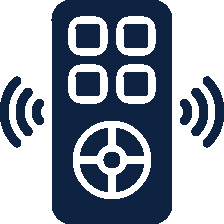
SMART CONTROLS
Control MaxForce screens via remote and
phone or integrate with popular home automation systems for advanced
capabilities.

SECURE TRACK
MaxForce Fix Hurricane Track holds firm under extreme loads

MAX CORROSION PROTECTION
Powder Coated Aluminum Protects your investment from exposer and corrosion.

HEAVY-DUTY DESIGN
Our screens are designed to withstand the extreme. High wind, Rain, or Shine, Dust Dirt, Dander, it doesn't matter. MaxForce Cover it all.

CUSTOM-MADE SCREENS
Tailor-made screens with vast color, fabric, and system options. Custom paint color and fabric matching are available.
MAXFORCE THE #1 MOTORIZED HURRICANE SCREEN
Contact A+ Certified MaxForce Screen Dealer Today...

HEADACHE-FREE
Exclusive self-tensioning system eliminates 99.9% of screen issues.
No track adjustments, broken zippers,
or dislodged screens.

LIFETIME WARRANTY
Exterior shade screens reduce cooling
bills and MaxForce hurricane screens
reduce insurance premiums in
hurricane zones.

HURRICANE STRONG
Our MaxForce tracks and advanced hybrid ballistic fabrics withstand
150+ mph winds. Approved by Florida Building Commission for hurricane
zones. Lab and real-world tested.

BUILT TO LAST
We use marine-grade materials such
as powder-coated aluminum, UV-protected nylons, stainless steel
fasteners, and premium fabrics. Resists corrosion, rust, and screen failure.

COST-SAVING
Exterior shade screens reduce cooling
bills and MaxForce hurricane screens
reduce insurance premiums in
hurricane zones.

SMART CONTROLS
Control MaxForce screens via remote and
phone or integrate with popular home automation systems for advanced
capabilities.

SECURE TRACK
MaxForce Fix Hurricane Track holds firm under extreme loads

MAX CORROSION PROTECTION
Powder Coated Aluminum Protects your investment from exposer and corrosion.

HEAVY-DUTY DESIGN
Our screens are designed to withstand
the extreme. High wind, Rain, or Shine,
Dust Dirt, Dander, it doesn't matter. MaxForce Cover it all.

CUSTOM-MADE SCREENS
Tailor-made screens with vast color, fabric, and system options. Custom
paint color and fabric matching are available.
MAXFORCE THE #1 MOTORIZED
HURRICANE SCREEN
Contact A+ Certified MaxForce Screen
Dealer Today...
MAXFORCE
Ready For Life's Storms

MAXFORCE HURRICANE SCREEN SYSTEM
A Certified, Tested System...
The MaxForce Hurricane Screen System meets or exceeds Miami-Dade and Florida Building Code requirements—the toughest hurricane codes on earth—for roll-down hurricane screens. Rated for the 185 MPH wind zone, and with real-world and certified testing. With spans of up to 25 feet, they exceed performance criteria for all local and International Building Codes.
MAXFORCE THE #1 MOTORIZED HURRICANE SCREEN
Contact A+ Certified MaxForce Screen Dealer Today...
MAXFORCE
Ready For Life's Storms

MAXFORCE HURRICANE SCREEN SYSTEM
A Certified, Tested System...
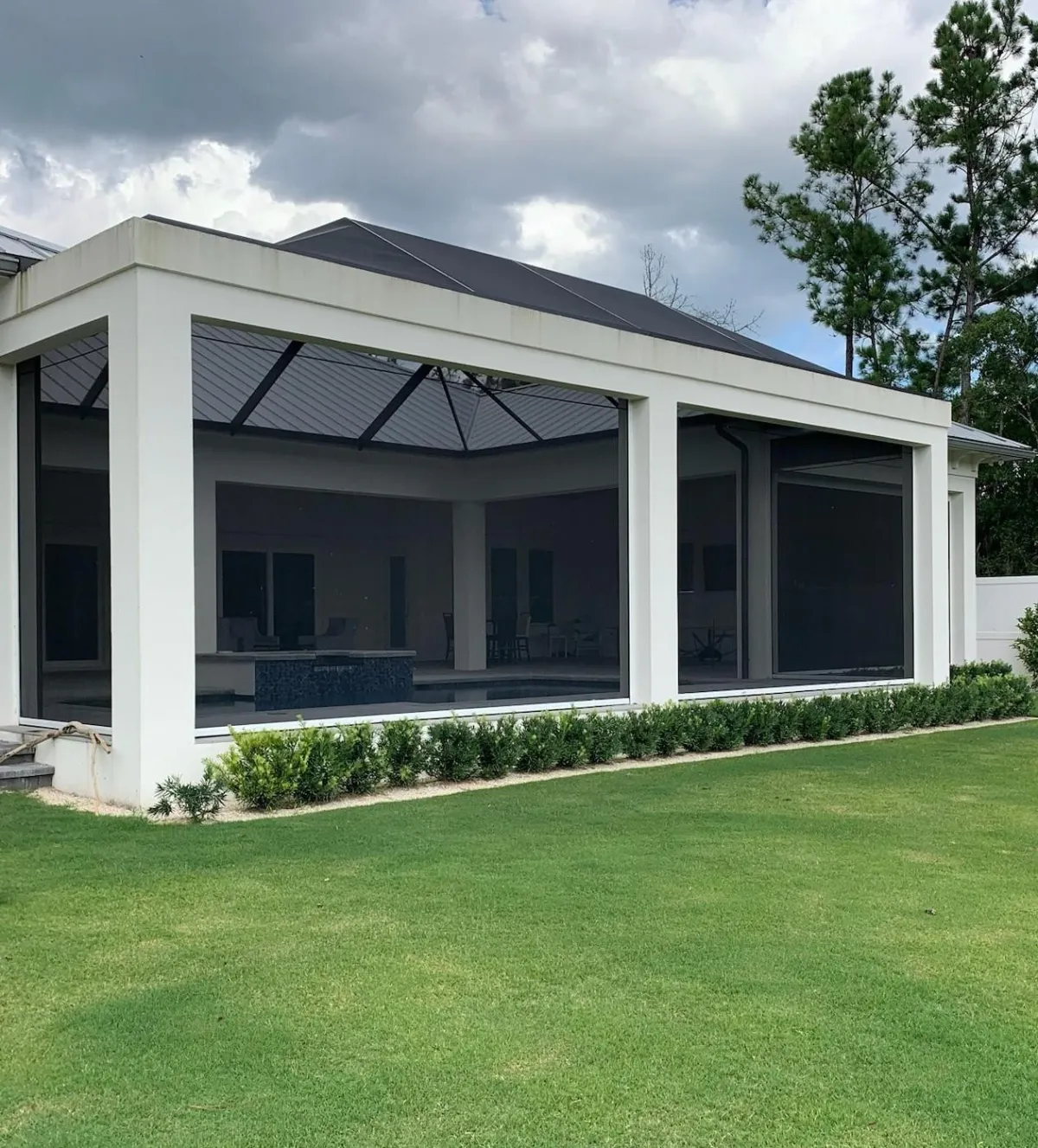
The MaxForce Hurricane Screen System meets or exceeds Miami-Dade and Florida Building Code requirements—the toughest hurricane codes on earth—for roll-down hurricane screens. Rated for the 185 MPH wind zone, and with real-world and certified testing. With spans of up to 25 feet, they exceed performance criteria for all local and International Building Codes.
MAXFORCE THE #1 MOTORIZED
HURRICANE SCREEN
Contact A+ Certified MaxForce Screen
Dealer Today...
THE MAXFORCE DIFFERENCE
Maxforce Hurricane Screen
THE MAXFORCE DIFFERENCE
MaxForce Hurricane Screen
MaxForce Hurricane Screens, powered by our MaxForce system, meet the toughest standards—including HVHZ certification in Miami-Dade and Broward. They last longer, resist more, and do more than any screen on the market—proven protection without compromise.
MaxForce Hurricane Screens —Delivers 365 days of perfect protection, rain or shine, on your patio and lanai. With the push of a button or a tap on the mobile app, your patio is storm-ready— furniture and openings fully protected in seconds.
MaxForce Hurricane Screens fabric blocks up to 95% of the sun’s damaging UV-rays while shielding against wind, rain, insects, dust, and debris. It also helps reduce heat and lower energy costs by limiting solar exposure—comfort and protection in one smart solution.
Like all Fenetex products, our MaxForce Hurricane Screens are highly customizable and built to order—made to fit your exact openings. No guesswork, no compromises—just precision-fit protection tailored to your space.
Pair our retractable MaxForce Hurricane Screens with other Fenetex screens for customized and independent solutions. Each screen operates independently, giving you the protection you want when you need it.
MaxForce Hurricane Screens offer built-in privacy without blocking your view. Like a two-way mirror, you can see out—but neighbors and passersby can not see in. It provides the perfect blend of openness and seclusion, day or night.
MAXFORCE THE #1 MOTORIZED HURRICANE SCREEN
Contact A+ Certified MaxForce Screen Dealer Today...
INTEGRITY MATTERS
How MaxForce Is Made Matters
MaxForce Hurricane Screens, powered by our MaxForce system, meet the toughest standards—including HVHZ certification in Miami-Dade and Broward. They last longer, resist more, and do more than any screen on the market—proven protection without compromise.
.
MaxForce Hurricane Screens —Delivers 365 days of perfect protection, rain or shine, on your patio and lanai. With the push of a button or a tap on the mobile app, your patio is storm-ready— furniture and openings fully protected in seconds.
MaxForce Hurricane Screens fabric blocks up to 95% of the sun’s damaging UV-rays while shielding against wind, rain, insects, dust, and debris. It also helps reduce heat and lower energy costs by limiting solar exposure—comfort and protection in one smart solution.
.
Like all Fenetex products, our MaxForce Hurricane Screens are highly customizable and built to order—made to fit your exact openings. No guesswork, no compromises—just precision-fit protection tailored to your space.
.
Pair our retractable MaxForce Hurricane Screens with other Fenetex screens for customized and independent solutions. Each screen operates independently, giving you the protection you want when you need it.
.
MaxForce Hurricane Screens offer built-in privacy without blocking your view. Like a two-way mirror, you can see out—but neighbors and passersby can not see in. It provides the perfect blend of openness and seclusion, day or night.
.
MAXFORCE THE #1 MOTORIZED
HURRICANE SCREEN
Contact A+ Certified MaxForce Screen
Dealer Today...
INTEGRITY MATTERS
How MaxForce Is
Made Matters
AMERICAN INGENUITY
Made in the USA.
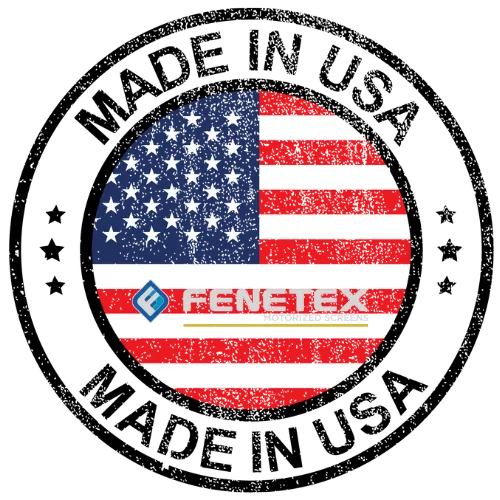
Proudly Made in the USA—every MaxForce screen is built with American strength, precision, and pride. From the smallest components to the final assembly, our materials are sourced and manufactured right here in the United States. No outsourcing. No compromises. Just hardworking Americans protecting American homes with the toughest screen system on the market.
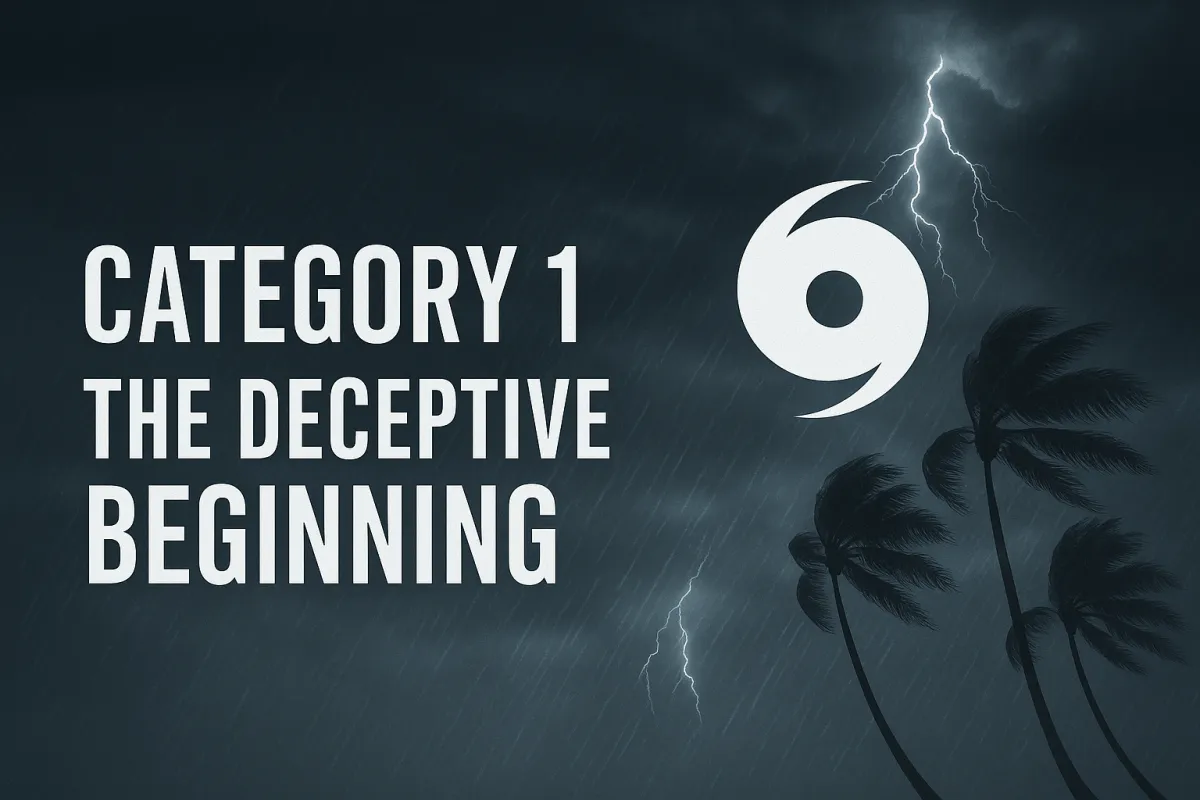
Category 1: The Deceptive Beginning
Here's the mistake people make.
They hear "Category 1" and think minimal. They think manageable. They think maybe they don't need to evacuate, don't need to board up, don't need to take it seriously.
And then the storm arrives.
Seventy-four miles per hour doesn't sound that fast. Highway speeds. A little gusty. How bad could it be? But wind doesn't work like speed limits. Wind at 74 mph isn't a gentle breeze—it's a sustained force that pounds structures for hours, testing every weak point, finding every vulnerability, turning ordinary objects into projectiles.
This is where people learn the hard way that Category 1 doesn't mean Category Safe.
The Numbers That Matter
According to the National Hurricane Center, a Category 1 hurricane carries sustained winds between 74 and 95 mph. That twenty-one mph range might seem narrow, but it matters more than you'd think. The difference between a storm at the low end and one near 95 mph? Research from NOAA shows that a 95 mph hurricane can produce nearly seven times the damage of a 75 mph storm—despite just a 20 mph increase in wind speed.
Wind damage doesn't scale linearly. It grows exponentially. Every additional mile per hour compounds the force. This is why even "weak" hurricanes demand respect.
What Category 1 Actually Does
Walk outside after a Category 1 hurricane and you'll see a landscape transformed.
Tree branches—thick ones that looked permanent yesterday—snapped and scattered across yards. Some trees uprooted entirely, their root balls exposed like open wounds in the earth. Power lines down. Poles leaning at angles they were never designed to hold.
Roofs tell their own story. Shingles ripped away in patches. Tiles cracked or missing. Gutters twisted or torn loose. Siding peeled back from homes, flapping in the wind like torn paper. Nothing catastrophic on well-built structures, but damage enough to require thousands in repairs.
Mobile homes fare worse. Much worse. Even anchored ones can suffer significant damage. Unanchored? They're tumbling across parks, crushing everything in their path.
And then there's the water.
Storm surge from a Category 1 typically reaches four to five feet above normal tide levels. Four feet doesn't sound like much until it's pushing through your front door, carrying debris, contaminating everything it touches. Coastal areas flood. Piers sustain damage. Boats break free from moorings.
The rainfall compounds it all. These storms can dump 8 to 18 inches of rain, overwhelming drainage systems, turning streets into rivers, flooding homes that never flooded before.
The Stories They Don't Tell
Hurricane Danny hit the Gulf Coast in July 1997 as a Category 1 storm. Small, compact, "minimal" by the scale's definition. It still caused $100 million in damage and killed nine people—four directly from the storm, five in traffic accidents during the chaos it created.
The flooding was the real killer. Extreme rainfall overwhelmed communities across Alabama and Mississippi. Streets became impassable. Homes filled with water. The storm spawned tornadoes across the Southeast. Cotton crops in Alabama were devastated—100,000 acres too damaged to salvage.
Fast forward to July 2020. Hurricane Hanna made landfall on the Texas coast as a high-end Category 1, with winds just short of Category 2 threshold. The storm caused $1.2 billion in damage. Wind gusts reached 110 mph—beyond what the category suggested. Storm surge hit 6.2 feet. Rainfall totals reached 18 inches in isolated areas.
Nearly 200,000 people lost power. The Bob Hall Pier in Corpus Christi partially collapsed. Homes lost roofs. Communities flooded. And this all happened during a COVID-19 surge, compounding the crisis for already-struggling hospitals and emergency services.
Two Category 1 hurricanes. Different years. Different locations. Same lesson: the category tells you the wind speed, but it doesn't tell you the whole story.
The Hidden Dangers
Power outages from Category 1 storms typically last several days. Sometimes longer. That means no air conditioning in the summer heat. No refrigeration. No way to charge phones or access information. Elderly residents and those dependent on medical equipment face life-threatening situations.
The tornadoes these storms spawn often strike with little warning. They form in the outer rainbands, sometimes hundreds of miles from the center. You're tracking the hurricane in one direction, and suddenly there's a tornado warning for your county.
Rip currents along beaches become deadly, pulling swimmers under even before the storm makes landfall. The National Weather Service reports rip currents kill more people along Gulf Coast beaches than any other weather-related hazard.
And then there's the aftermath. Downed trees block roads. Flooded streets remain impassable for days. Insurance adjusters get overwhelmed. Contractors get booked solid. What seems like manageable damage turns into weeks or months of disruption.
Why People Get It Wrong
The Saffir-Simpson scale ranks storms from 1 to 5 based solely on wind speed. It's clean. It's simple. It's easy to communicate.
It's also incomplete.
Storm surge varies based on coastal geography and the storm's angle of approach. A Category 1 hitting at high tide on a shallow coastline can produce surge matching a Category 3 elsewhere. Hurricane Ike demonstrated this in 2008—it weakened to Category 2 before landfall, leading some Texas residents to stay home. The storm surge, however, matched Category 4 or 5 levels. One hundred twelve people died.
Rainfall depends on how fast the storm moves, not how strong its winds are. A slow-moving Category 1 can dump more water than a fast-moving Category 3.
The category tells you about wind. But wind is often the least deadly part.
What Protection Looks Like
Understanding Category 1 storms means preparing for what they actually do, not what their name suggests.
Secure everything outside. Patio furniture becomes projectiles at 74 mph. Grills, planters, decorations—anything not anchored goes flying.
Protect windows and doors. Even if you're not in an evacuation zone, hurricane-rated screens provide crucial defense against wind-driven debris. One broken window can lead to catastrophic roof damage as wind pressure builds inside the structure.
Have supplies ready before the season starts. Water, non-perishable food, medications, batteries, cash. Once watches get issued, stores empty fast.
Know your evacuation zone. Not every Category 1 requires evacuation, but if you're in a flood-prone area or mobile home, the storm's category becomes irrelevant. You need to leave.
And perhaps most importantly: never let the number fool you into complacency. Category 1 is still a hurricane. It's still dangerous. It still kills people every year who thought they could ride it out.
The Bottom Line
Category 1 hurricanes occupy a strange psychological space. They're technically the weakest hurricanes, yet they're still powerful enough to cause widespread destruction. They're common enough that people become familiar with them, yet unpredictable enough to surprise even experienced coastal residents.
The deception lies in the name. "Category 1" sounds like a beginning, a warm-up, something you can handle. But these storms have sustained winds strong enough to damage well-built homes, extensive enough to leave communities without power for days, and wet enough to flood entire neighborhoods.
They deserve your respect. Your preparation. Your full attention.
Because when that 74 mph wind has been pounding your home for six hours straight, when the water's rising in your street, when trees are falling and the power's out and you're realizing you should have taken it more seriously—that's when the category stops mattering and survival becomes the only thing that does.
Don't be the person who learns this lesson the hard way.
Next in the series: Category 2: When Protection Becomes Critical
Previous post: What Actually Makes a Hurricane a Hurricane
Additional Resources:
National Hurricane Center - Saffir-Simpson Scale - Official category definitions
NOAA Hurricane Damage Potential - Understanding exponential wind damage
Ready.gov Hurricane Safety - Federal preparedness guidelines
Company
MaxForce Hurricane Screens
Design Ideals
Resources

© 2025 Maxforce - Powered by Fenetex and Friends of Oatis
AMERICAN INGENUITY
Made in the USA
Proudly Made in the USA—every MaxForce screen is built with American strength, precision, and pride. From the smallest components to the final assembly, our materials are sourced and manufactured right here in the United States. No outsourcing. No compromises. Just hardworking Americans protecting American homes with the toughest screen system on the market.

Category 1: The Deceptive Beginning
Here's the mistake people make.
They hear "Category 1" and think minimal. They think manageable. They think maybe they don't need to evacuate, don't need to board up, don't need to take it seriously.
And then the storm arrives.
Seventy-four miles per hour doesn't sound that fast. Highway speeds. A little gusty. How bad could it be? But wind doesn't work like speed limits. Wind at 74 mph isn't a gentle breeze—it's a sustained force that pounds structures for hours, testing every weak point, finding every vulnerability, turning ordinary objects into projectiles.
This is where people learn the hard way that Category 1 doesn't mean Category Safe.
The Numbers That Matter
According to the National Hurricane Center, a Category 1 hurricane carries sustained winds between 74 and 95 mph. That twenty-one mph range might seem narrow, but it matters more than you'd think. The difference between a storm at the low end and one near 95 mph? Research from NOAA shows that a 95 mph hurricane can produce nearly seven times the damage of a 75 mph storm—despite just a 20 mph increase in wind speed.
Wind damage doesn't scale linearly. It grows exponentially. Every additional mile per hour compounds the force. This is why even "weak" hurricanes demand respect.
What Category 1 Actually Does
Walk outside after a Category 1 hurricane and you'll see a landscape transformed.
Tree branches—thick ones that looked permanent yesterday—snapped and scattered across yards. Some trees uprooted entirely, their root balls exposed like open wounds in the earth. Power lines down. Poles leaning at angles they were never designed to hold.
Roofs tell their own story. Shingles ripped away in patches. Tiles cracked or missing. Gutters twisted or torn loose. Siding peeled back from homes, flapping in the wind like torn paper. Nothing catastrophic on well-built structures, but damage enough to require thousands in repairs.
Mobile homes fare worse. Much worse. Even anchored ones can suffer significant damage. Unanchored? They're tumbling across parks, crushing everything in their path.
And then there's the water.
Storm surge from a Category 1 typically reaches four to five feet above normal tide levels. Four feet doesn't sound like much until it's pushing through your front door, carrying debris, contaminating everything it touches. Coastal areas flood. Piers sustain damage. Boats break free from moorings.
The rainfall compounds it all. These storms can dump 8 to 18 inches of rain, overwhelming drainage systems, turning streets into rivers, flooding homes that never flooded before.
The Stories They Don't Tell
Hurricane Danny hit the Gulf Coast in July 1997 as a Category 1 storm. Small, compact, "minimal" by the scale's definition. It still caused $100 million in damage and killed nine people—four directly from the storm, five in traffic accidents during the chaos it created.
The flooding was the real killer. Extreme rainfall overwhelmed communities across Alabama and Mississippi. Streets became impassable. Homes filled with water. The storm spawned tornadoes across the Southeast. Cotton crops in Alabama were devastated—100,000 acres too damaged to salvage.
Fast forward to July 2020. Hurricane Hanna made landfall on the Texas coast as a high-end Category 1, with winds just short of Category 2 threshold. The storm caused $1.2 billion in damage. Wind gusts reached 110 mph—beyond what the category suggested. Storm surge hit 6.2 feet. Rainfall totals reached 18 inches in isolated areas.
Nearly 200,000 people lost power. The Bob Hall Pier in Corpus Christi partially collapsed. Homes lost roofs. Communities flooded. And this all happened during a COVID-19 surge, compounding the crisis for already-struggling hospitals and emergency services.
Two Category 1 hurricanes. Different years. Different locations. Same lesson: the category tells you the wind speed, but it doesn't tell you the whole story.
The Hidden Dangers
Power outages from Category 1 storms typically last several days. Sometimes longer. That means no air conditioning in the summer heat. No refrigeration. No way to charge phones or access information. Elderly residents and those dependent on medical equipment face life-threatening situations.
The tornadoes these storms spawn often strike with little warning. They form in the outer rainbands, sometimes hundreds of miles from the center. You're tracking the hurricane in one direction, and suddenly there's a tornado warning for your county.
Rip currents along beaches become deadly, pulling swimmers under even before the storm makes landfall. The National Weather Service reports rip currents kill more people along Gulf Coast beaches than any other weather-related hazard.
And then there's the aftermath. Downed trees block roads. Flooded streets remain impassable for days. Insurance adjusters get overwhelmed. Contractors get booked solid. What seems like manageable damage turns into weeks or months of disruption.
Why People Get It Wrong
The Saffir-Simpson scale ranks storms from 1 to 5 based solely on wind speed. It's clean. It's simple. It's easy to communicate.
It's also incomplete.
Storm surge varies based on coastal geography and the storm's angle of approach. A Category 1 hitting at high tide on a shallow coastline can produce surge matching a Category 3 elsewhere. Hurricane Ike demonstrated this in 2008—it weakened to Category 2 before landfall, leading some Texas residents to stay home. The storm surge, however, matched Category 4 or 5 levels. One hundred twelve people died.
Rainfall depends on how fast the storm moves, not how strong its winds are. A slow-moving Category 1 can dump more water than a fast-moving Category 3.
The category tells you about wind. But wind is often the least deadly part.
What Protection Looks Like
Understanding Category 1 storms means preparing for what they actually do, not what their name suggests.
Secure everything outside. Patio furniture becomes projectiles at 74 mph. Grills, planters, decorations—anything not anchored goes flying.
Protect windows and doors. Even if you're not in an evacuation zone, hurricane-rated screens provide crucial defense against wind-driven debris. One broken window can lead to catastrophic roof damage as wind pressure builds inside the structure.
Have supplies ready before the season starts. Water, non-perishable food, medications, batteries, cash. Once watches get issued, stores empty fast.
Know your evacuation zone. Not every Category 1 requires evacuation, but if you're in a flood-prone area or mobile home, the storm's category becomes irrelevant. You need to leave.
And perhaps most importantly: never let the number fool you into complacency. Category 1 is still a hurricane. It's still dangerous. It still kills people every year who thought they could ride it out.
The Bottom Line
Category 1 hurricanes occupy a strange psychological space. They're technically the weakest hurricanes, yet they're still powerful enough to cause widespread destruction. They're common enough that people become familiar with them, yet unpredictable enough to surprise even experienced coastal residents.
The deception lies in the name. "Category 1" sounds like a beginning, a warm-up, something you can handle. But these storms have sustained winds strong enough to damage well-built homes, extensive enough to leave communities without power for days, and wet enough to flood entire neighborhoods.
They deserve your respect. Your preparation. Your full attention.
Because when that 74 mph wind has been pounding your home for six hours straight, when the water's rising in your street, when trees are falling and the power's out and you're realizing you should have taken it more seriously—that's when the category stops mattering and survival becomes the only thing that does.
Don't be the person who learns this lesson the hard way.
Next in the series: Category 2: When Protection Becomes Critical
Previous post: What Actually Makes a Hurricane a Hurricane
Additional Resources:
National Hurricane Center - Saffir-Simpson Scale - Official category definitions
NOAA Hurricane Damage Potential - Understanding exponential wind damage
Ready.gov Hurricane Safety - Federal preparedness guidelines
Company
MaxForce Hurricane Screens
Design Ideals
Resources

© 2025 Maxforce - Powered by Fenetex and Friends of Oatis

